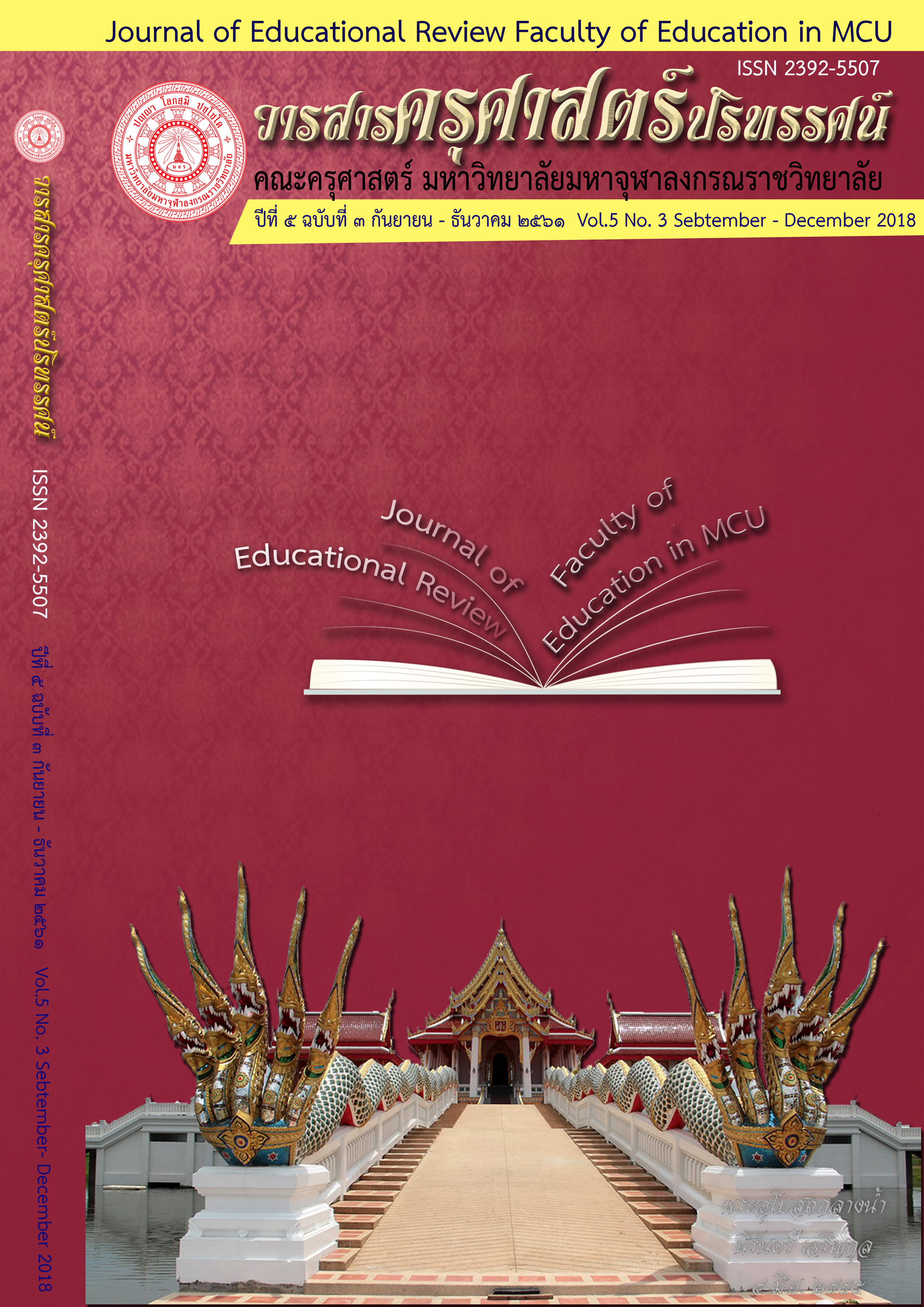Model of Academic Risk Management of Educational Institutes Under the Office of Primary Educational Service Area
Main Article Content
Abstract
The objectives of this dissertation were; 1) to study the state of academic risk
management of educational institutes under the Office of Primary Educational
Service Area, 2) to develop a model of academic risk management of educational
institutes under the Office of Primary Educational Service Area, and 3) to propose a
model of academic risk management of educational institutes under the Office of
Primary Educational Service Area. The mixed research methodology was used in the
study as follows; 1) to collect the information from documents and analyze by
content analysis, 2) to collect the data by questionnaires from 367 samples
consisting of school administrators and teachers, and then analyze by frequency,
mean, percentage, and standard deviation, 3) to interview with 8 experts and analyze
by content analysis, and 4) to conduct a focus group discussion with 10 experts for
the finalized model of academic risk management.
The research results showed that:
1. The state of academic risk management of educational institutes under
the Office of Primary Educational Service Area was at the moderate level overall. In
details, the highest level was on measurement and evaluation, followed by media
innovation and information technology development, curriculum development, and
teaching and learning management respectively. The risks in each aspect were on
strategic plan, operation, budget spending, and performance under regulations.
2. There were 8 steps in developing the academic risk management of
educational institutes under the Office of Primary Educational Service Area; 1)
Internal Environment, 2) Objective Setting, 3) Event Identification, 4) Risk Assessment,
5) Risk Responses, 6) Control Activities, 7) Information and Communication, and 8)
Monitoring.
3. Five operation models approved by the experts were as follows; 1) The
state of academic risk management of educational institutes consisted of (1)
curriculum, (2) teaching and learning, (3) media innovation and information
technology development, and (4) measurement and evaluation. 2) The objectives of
academic risk management of educational institutes consisted of (1) to set up
activities reducing risks, (2) to enhance the role of school personnel in risk
management, and (3) to improve the school academic management system. 3) Four
risk indicators were financial risk, strategic risk, operation risk, and rules and
regulations risk. 4) Participatory risk management was composed of (1) to set strategic
plans for academic, action plan and project, and activity, (2) to produce information,
action plan, implementation method, rules and regulations, and publicize in school,
(3) to follow the academic plan, (4) to follow up, monitor, report, adjust and improve
the plan regularly, and (5) to arrange a meeting with sub-unit administrators for
acknowledgement, consideration and reflection. 5) Risk control activity and
monitoring consisted of (1) regular follow up and monitor, (2) improving performance
skills of the personnel, and (3) meeting, reporting and reflecting in the time frame.
Article Details
ทัศนะและความคิดเห็นที่ปรากฏในบทความในวารสารฉบับนี้ถือเป็นความรับผิดชอบของผู้เขียนบทความนั้นเพียงผู้เดียว และไม่ถือเป็นทัศนะและความรับผิดชอบของกองบรรณาธิการ
กองบรรณาธิการขอสงวนสิทธิ์ในการคัดเลือกบทความลงตีพิมพ์และจะแจ้งให้เจ้าของบทความทราบหลังจากผู้ประเมินบทความตรวจอ่านบทความแล้ว
ต้นฉบับที่ได้รับการตีพิมพ์ในวารสารครุศาสตร์ปริทรรศน์ คณะครุศาสตร์ มหาวิทยาลัยมหาจุฬาลงกรณราชวิทยาลัย ถือเป็นกรรมสิทธิ์ของคณะครุศาสตร์ มหาวิทยาลัยมหาจุฬาลงกรณราชวิทยาลัย ห้ามนำข้อความทั้งหมดหรือบางส่วนไปพิมพ์ซ้ำ เว้นเสียแต่ว่าจะได้รับอนุญาตจากมหาวิทยาลัยฯ เป็นลายลักษณ์อักษร
References
Vol.1.
Ralph B. Kimbrough and Michael Nunnery. (1998). Education Administration. 3rd ed.
New York : Macmillan Publishing Company.
Ronald F. Campbell. (1977). Edwin M. Bridges, and Raphael O. Nystrand
Introduction to Education Administration. Boston: Allyn and Bacon,
Ruzic D.L. & Dakic, J. (2014). The Risk Management in Higher Education
Institutions. Online Journal of Applied Knowledge Management. Vol. 2.
Issues 1
Stulz, R.M. (1996). Rethinking Risk Management. McKensey Seminar at the Annual
Meeting of the International Association of Financial Engineering.
ดวงใจ ช่วยตระกูล. (๒๕๕๑). การบริหารความเสี่ยงในสถานศึกษาระดับการศึกษาขั้นพื้นฐาน.
วิทยานิพนธ์ปรัชญาดุษฎีบัณฑิต (การบริหารการศึกษา). บัณฑิตวิทยาลัย : มหาวิทยาลัย
ศิลปากร.
นิพนธ์ กินาวงศ์. (๒๕๔๔). หลักการบริหาร. พิษณุโลก: โรงพิมพ์ตระกูลไทย.
ประวัติ ยงบุตร. (๒๕๕๖). การพัฒนารูปแบบการบริหารความเสี่ยงทั่วทั้งองค์กรในสานักงานเขต
พื้นที่การศึกษาประถมศึกษา. วิทยานิพนธ์ดุษฎีบัณฑิต สาขาการบริหารการศึกษา.
บัณฑิตวิทยาลัย : มหาวิทยาลัยนเรศวร,
ปรีชา จันทวี. (๒๕๕๓). การพัฒนาระบบการประเมินและการควบคุมความเสี่ยงทางการศึกษา
สาหรับโรงเรียน : การประเมินแบบเสริมสร้างพลังอานาจ. วิทยานิพนธ์ปริญญาปรัชญา
ดุษฎีบัณฑิต. บัณฑิตวิทยาลัย : มหาวิทยาลัยมหาสารคาม.
พระเทพโสภณ (ประยูร ธมฺมจิตฺโต). (๒๕๔๗). ทิศทางการศึกษาไทย. กรุงเทพมหานคร: มหาจุฬาลง
กรณราชวิทยาลัย.


